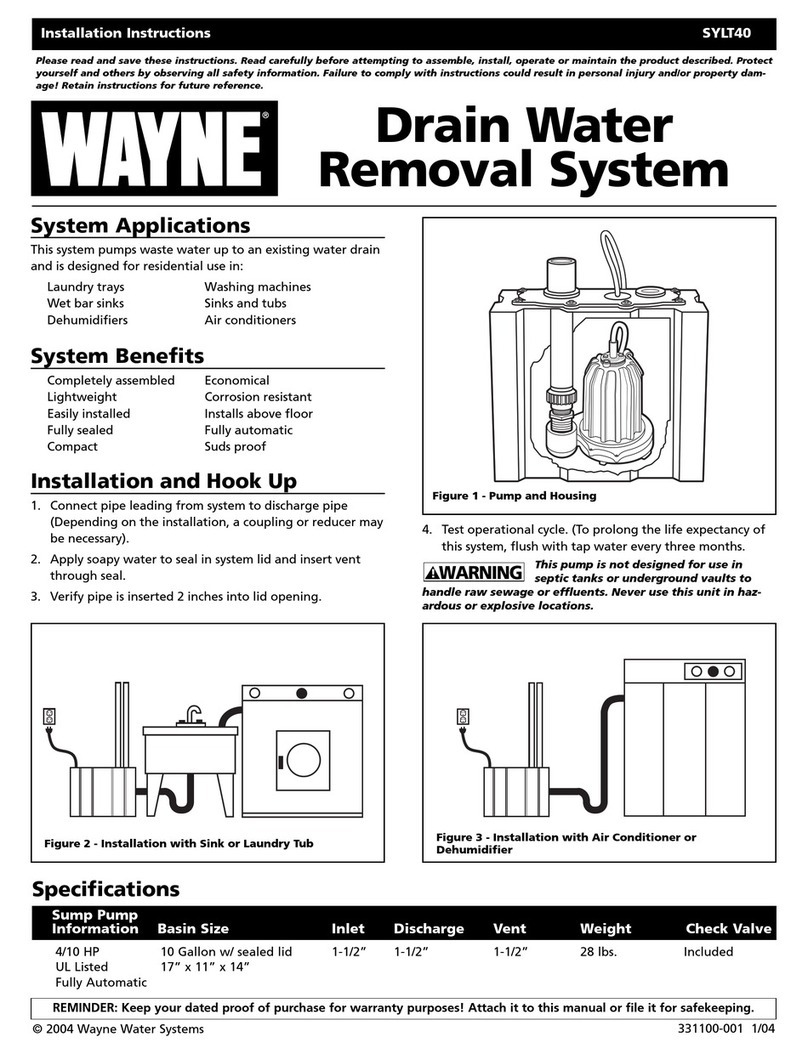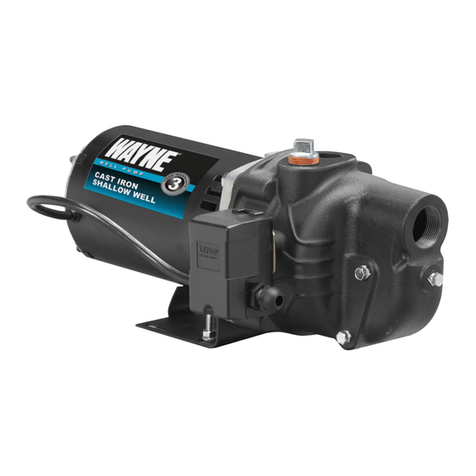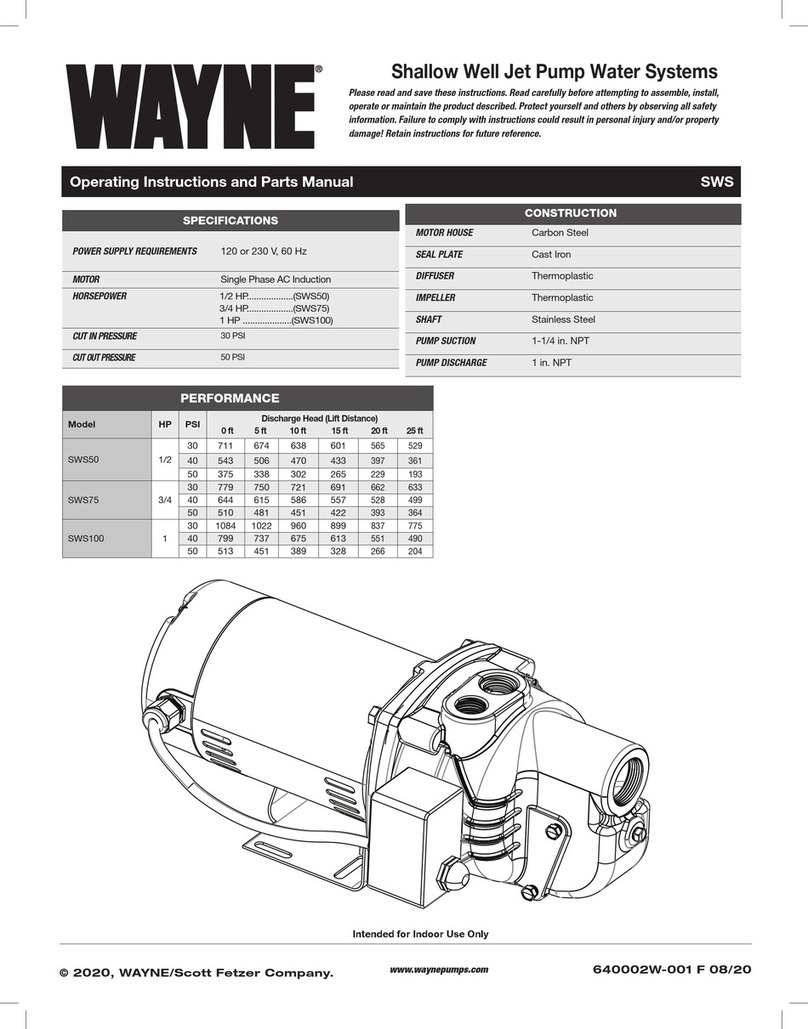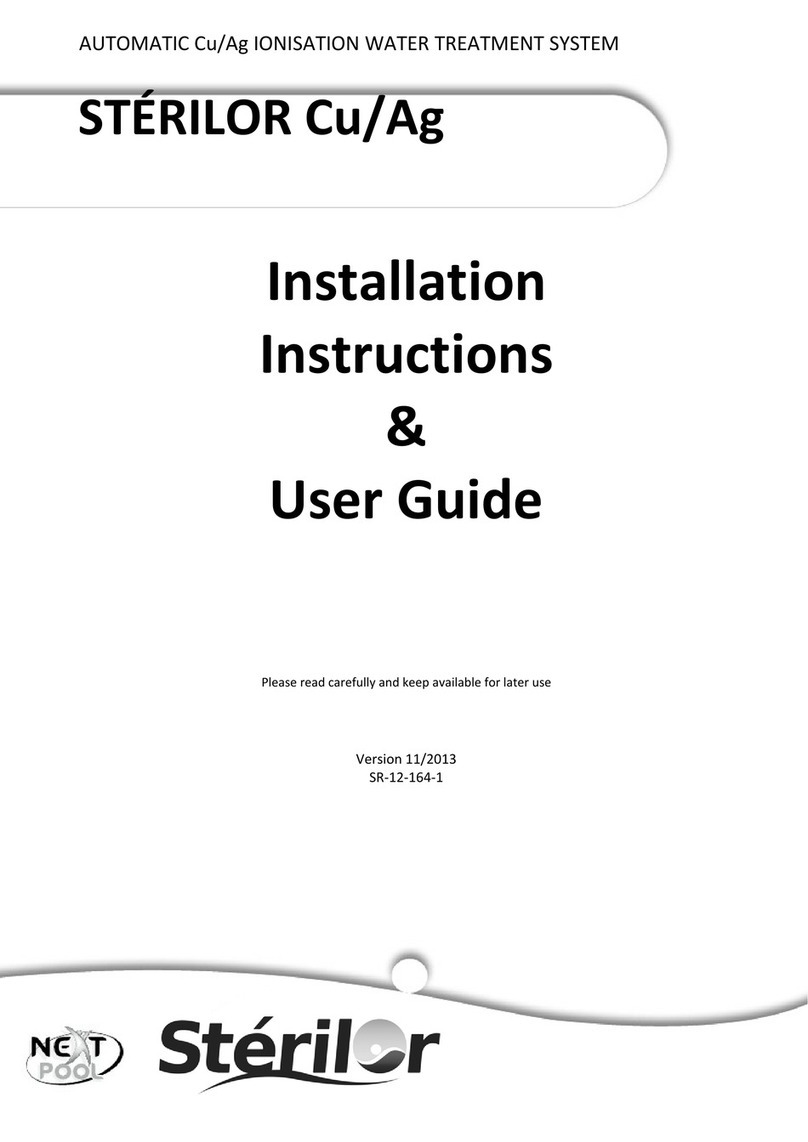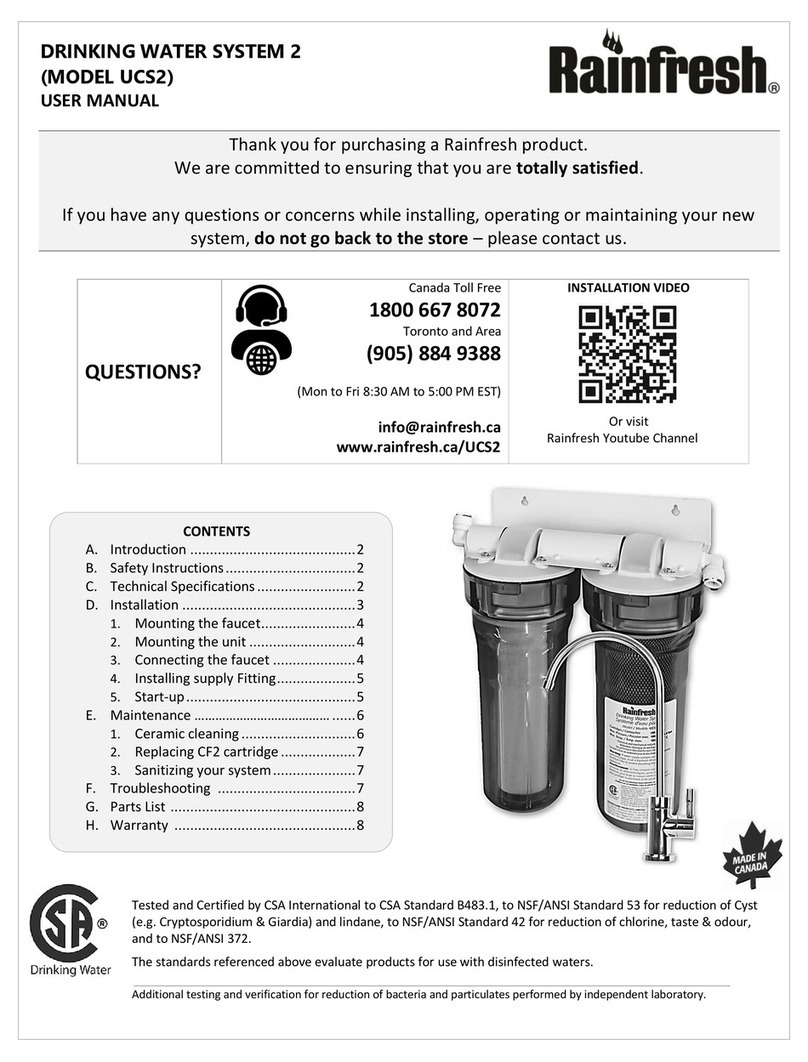
3
www.waynepumps.com
CWS Series
Disconnect power and release all pressure from
the system before attempting to install, service, relocate or perform any
maintenance. Lock the power disconnect in the open (off) position. Tag
out the power disconnect to prevent unexpected application of power.
Débrancher de la source d’alimentation puis
dissiper toute la pression du système avant d’essayer d’installer,
de réparer, de déplacer ou de procéder à l’entretien. Verrouiller
le sectionneur de courant en position ouverte (OFF). Étiqueter le
sectionneur de courant pour éviter toute mise sous tension imprévue.
3. Drain all water from the system before servicing.
4. Periodically inspect pump and system components. Perform routine
maintenance as required (See Maintenance, page 8).
Personal Safety:
a. Wear safety glasses at all times when working with pumps.
b. Keep work area clean, uncluttered and properly lighted replace
all unused tools and equipment.
c. Keep visitors at a safe distance from work area.
5. Do not pump chemicals or corrosive liquids. Pumping these liquids
shortens the life of the pumps seals and moving parts and will void
the warranty. Pump ONLY clear water.
6. When installing pump, cover the well to prevent foreign matter
from falling into well and contaminating the water and/or damaging
internal mechanical pumping components.
7. Always test the water from the well for purity before use. Check with
local health department for test procedure.
8. Complete pump and piping system MUST be protected against
below freezing temperatures. Freezing temperatures could cause
severe damage and void the warranty.
9. Do not run the pump dry or damage will occur and will void
warranty.
This pump is designed for indoor installation
only unless housed and protected from the elements. Failure
to install indoors will significantly increase the risk of injury
or death from electrical shock and void warranty.
Cette pompe est conçue pour
être installée à l’intérieur sauf si elle est abritée et protégée contre
les intempéries. Ne pas l’installer à l’abri dans un local augmente
considérablement le risque de blessure ou de mort par électrocution,
annuler la garantie.
All wiring should be performed by a licensed or
certified electrician.
Tout câblage doit être réalisé par un électricien
agréé ou certifié.
10. Make sure the line voltage and frequency of electrical current supply
agrees with the motor wiring.
11. Do not attempt repairs to the electric motor. All repairs to the motor
must be completed at a licensed or certified electrical motor repair
shop.
Do not touch an operating motor. Modern
motors are designed to operate at high temperatures.
NE PAS toucher un moteur en marche. Les
moteurs modernes sont conçus pour fonctionner à des températures
élevées.
12 Avoid kinking electrical cord and protect electrical cord from sharp
objects, hot surfaces, oil and chemicals.
13. Keep fingers and foreign objects away from ventilation and other
openings. Do not insert any objects into the motor.
Risk of electric shock! Never connect the green
(or green/yellow) wire to a live terminal!
Risque de choc électrique! Ne JAMAIS brancher
le fil vert (ou vert et jaune) à une borne sous tension!
14. Use wire of adequate size to minimize voltage drop at the motor.
Do not handle pump or pump motor with wet
hands, when standing on a wet or damp surface or when standing in
water. Fatal electrical shock will occur.
NE PAS manipuler de pompe ou de moteur de
pompe avec les mains humides ou debout sur une surface mouillée ou
humide, ou dans l’eau. Ceci peut occasionner un choc électrique mortel.
Pump motor is equipped with an automatic
resetting thermal protector and may restart unexpectedly. Protector
tripping is an indication of motor overheating because of operating
pump at low heads (low discharge restriction), excessively high or low
voltage, inadequate wiring, incorrect motor connections, excessive
surrounding air temperature, inadequate ventilation, and/or defective
motor or pump.
Le moteur de la pompe est doté d’un protecteur
thermique à réinitialisation automatique et pourrait redémarrer
de manière imprévue. Le déclenchement du protecteur est une
indication de surchauffe du moteur à cause d’une utilisation de la
pompe à faible hauteur de chute (restriction de faible décharge),
d’une tension excessivement haute ou basse, d’un câblage inadéquat,
d’un branchement incorrect du moteur, d’une température ambiante
excessive, d’une ventilation inadéquate ou d’une pompe ou d’un moteur
défectueux.












